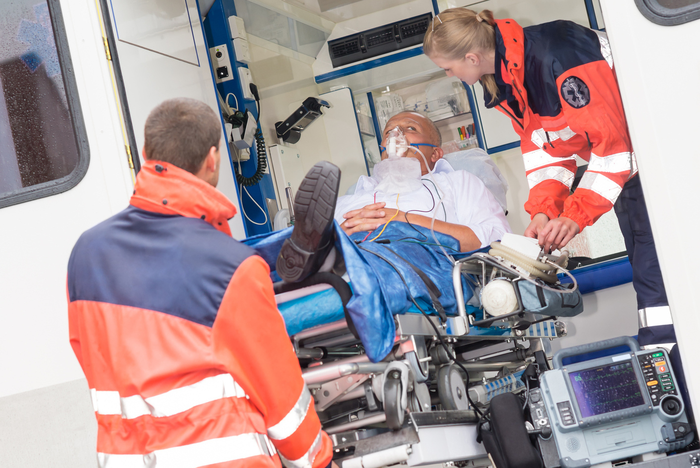
As a paramedic, you are frequently called upon to treat respiratory emergencies that come in many forms, from asthmatics to those with emphysema to pediatrics suffering from obstructions. No matter the type of call, emergencies involving the respiratory system are some of the most critical you will handle. Recognizing the true respiratory emergency is the first step in treating it. It all starts with your assessment.
Distinguishing a Respiratory Emergency
As you begin your assessment, the first challenge is determining the seriousness of the situation. There are three stages of respiratory abnormality:
- Respiratory insufficiency – occurs when the patient’s respiratory system is unable to keep up with the normal metabolic demands of the body. Insufficiency may arise from injuries to the head, thorax, spinal cord, or central nervous system depression, as seen in some drug overdoses.
- Respiratory depression – when the patient’s respiratory rate falls (typically <12 breaths/minute) for a prolonged period.
- Respiratory failure – when the patient’s respiratory system fails to meet the body’s metabolic needs, the patient is considered to be in failure. He or she may appear confused, anxious, or obtunded, and if the situation is not corrected, respiratory arrest may follow. Failure is usually categorized as:
- Oxygenation failure – when the patient can no longer sustain an adequate respiratory rate due to fatigue.
- Ventilatory failure – develops as the arterial tension of CO2 increases.
Assessing the Respiratory Emergency
A thorough assessment will enable you to distinguish the current respiratory emergency. The assessment should include:
- Breath sounds – using a stethoscope against the skin, listen for the presence of lung sounds in all five lobes, as well as any abnormal sounds, including:
- Wheezing
- Rhonchi
- Crackles
- Stridor
- Pleural friction rub
- Respiratory depth – this can be accomplished through direct observation or by palpation.
- Respiratory pattern – abnormal patterns can affect the rate, depth, and regularity of respirations; they include:
- Cheyne–Stokes breathing – a cyclic pattern that increases in rate and depth, followed by periods of apnea.
- Ataxic breathing – similar to Cheyne–Stokes, but the pattern is irregular.
- Cluster breathing – a cluster of irregular respirations, varying in depth, followed by periods of apnea at irregular intervals.
- Kussmaul’s respirations – fast and deep breathing without periods of apnea, typically characterized by labored breathing punctuated with sighs.
- Apneustic breathing – prolonged, gasping inspiration followed by brief, ineffective expirations.
- Agonal respirations – a pattern of deep, slow, shallow, and irregular breathing; may be gasping.
- Palpation – performed by placing the hands directly on the chest wall to gauge the expansion of the lungs, equality, and any irregularities in the skin, such as subcutaneous emphysema.
Recognizing respiratory emergencies before they happen can be accomplished by early recognition via a thorough patient assessment. Time is of the essence, so evaluate, treat, and transport those respiratory patients, and perhaps you will minimize, or even correct, their emergency.
Editor's Note: This blog was originally published in March 2023. It has been re-published with additional up to date content.
















